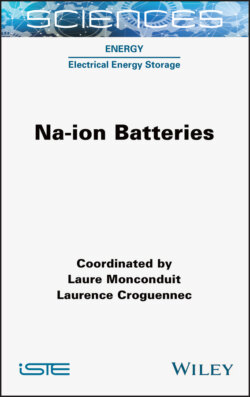Читать книгу Na-ion Batteries - Laure Monconduit - Страница 12
I.2. From the electrodes to the electrolyte for NIBs I.2.1. Positive electrodes
ОглавлениеThe first two chapters are dedicated to the positive and negative electrodes for a NIB. Among the materials intensively studied as prospective positive electrode for NIBs are polyanionics, layered oxides, Prussian blue analogues and organic compounds.
With their high theoretical capacity and ionic mobility, layered transition metal oxides are likely the most promising positive electrodes. It is interesting to mention that the alkali deintercalation/intercalation reactions in layered compounds were studied for the first time in NaxCoO2 (Braconnier et al. 1981; Delmas et al. 1981) before the demonstration of lithiation/delithiation reactions in the 2D lithium layered oxides. This structure presents a huge versatility of stackings and compositions by playing with the composition in 3d transition metals and in sodium that gives the potential to modulate their electrochemical properties. Their performance and the remaining challenges are detailed in Chapter 1.
Among the promising positive electrode materials for NIBs, although achieving lower specific capacity than the layered oxides, polyanionic compounds represent an important class of materials. Indeed, they are characterized by high operating voltage, excellent chemical stability and life span. A large panel of structures and compositions exist, with as for layered oxides the possibility to tailor significantly the operating voltage, and thus the energy density, by varying the nature of the involved redox couple. Today, the most attractive materials are vanadium-containing phosphates, characterized by two different structures, Na3V2(PO4)3 and Na3V2(PO4)2F3. Chapter 2 shows the versatility of these families of compounds, highlighting their differences, their interesting properties and the challenges for their development in the next generations of NIBs.
